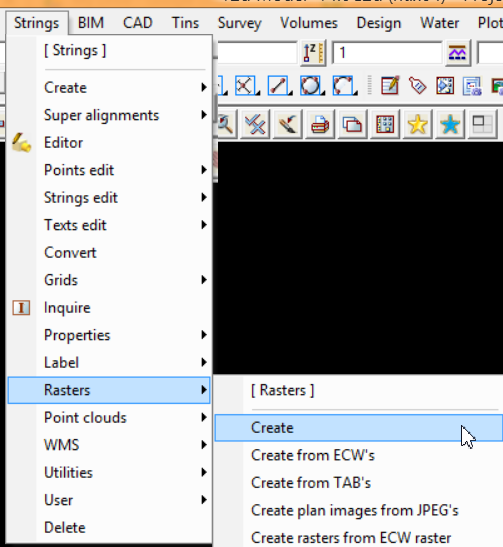This article provides the instructions for importing an image from Nearmap into 12d Model.
MapBrowser
- Log into MapBrowser using your account username and password.
- In MapBrowser, locate the Area of Interest (AOI) you wish to capture.
- Export the AOI as a georeferenced image in the required projection as shown below.
NOTE: Make sure you select the correct projection for the image; this should match the coordinate system of your data in 12d Model.
 A .JGW file is created that stores the correct coordinates of the JPEG image captured.
A .JGW file is created that stores the correct coordinates of the JPEG image captured. - Click DOWNLOAD FILES to save the selections and capture the image. The files are downloaded as a single ZIP file that contains a JGW and a JPG file. Browse to the default downloads folder to view and extract the files in 12d Model.
NOTE: Due to the long names produced on the “*.JPG” and “*.JGW” files from Nearmap, users have in some instances had difficultly loading/viewing the data into 12d. This is often causes because the Project Directory structure, name of the project, model used for the Raster etc is larger than the 256 characters allowed by Windows. This is a limitation of Windows, so please consider renaming the files to something manageable.
12d Model
- To import the .JPG and .JGW files into 12d Model, go to Strings => Rasters => Create.
 The Create Raster Element panel is displayed.
The Create Raster Element panel is displayed. - From the Source Image tab, select the Image Format dropdown menu and select JPEG.

- Go to the Raster file in the panel and click on the folder icon on the right hand side.
This allows you to browse to the .JPEG file that you unzipped earlier from Nearmap.

- Once the JPEG file is selected you should see the Width in pixels, Height in pixels and Depth in bits populate. If it doesn’t populate and goes red in colour you will need to re-select the JPEG file.

- On the Data Format drop down menu select JGW (ESRI World).

- Once the Data Format is selected this allows the folder icon to be active for the Location File. From here you need to select the folder icon and browse to the .JGW file.
NOTE: Once the JGW file is selected you should see the World Location parameters auto populate. If you don’t then you will need to re-browse to the location file (JGW) and select it again.

- Go to the Output tab.
- From here you can type in a Model for the raster. We’ve used the default of “rasters” shown below.
If required, select the option to make the raster transparent using the Transparent Blend. If this is set to 1 (one), it is NOT transparent. If it is set to 0 (Zero), you won’t see the raster at all. So a number between 1.5 to 1.7 is usually recommended if you want to make the raster transparent.
You also have the option to drape the raster to a TIN if you have the Visualization module.

- Select “Create” to complete the inserting of the raster.
NOTE: Don’t forget to go to the + icon and turn the rasters model on!